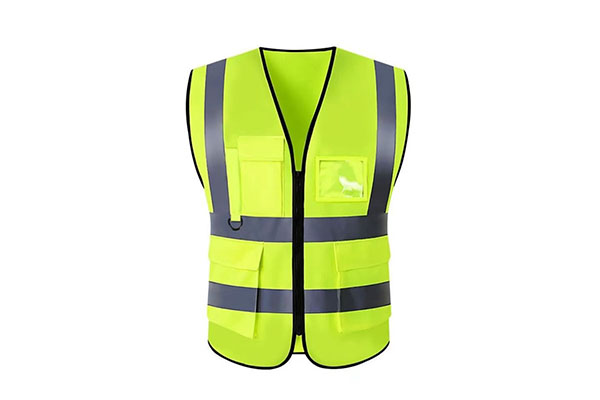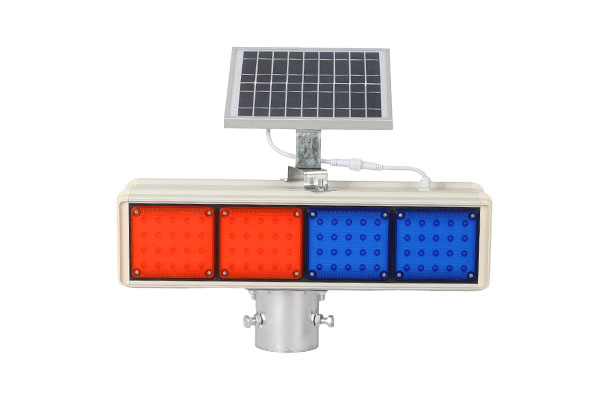How do traffic signs enhance driving safety?
Release Time : 2025-09-23
In the modern road traffic system, traffic signs, as a fundamental and indispensable carrier of information, perform multiple functions, including conveying regulations and instructions, warning of potential risks, guiding driving directions, and regulating driving behavior. With the acceleration of urbanization and the continuous increase in vehicle ownership, the road environment is becoming increasingly complex, significantly increasing the information burden faced by drivers. In this context, scientifically and rationally designed traffic signs are not just a static guide tool but also a critical infrastructure for improving overall traffic safety. Traffic signs demonstrate irreplaceable advantages in preventing traffic accidents, reducing human error, and optimizing traffic flow. Enhancing driving safety through clear, eye-catching, and standardized design has become a key focus in the development of modern intelligent transportation systems.
1. Improving the Immediacy and Accuracy of Information Transmission
Traffic signs use visual elements such as graphics, symbols, text, and color to convey key information to drivers in a very short time. Compared to verbal instructions or navigation voice commands, signs offer the advantages of immediate visual and repetitive prompts. For example, warning signs placed before sharp turns, steep slopes, or school zones can alert drivers seconds or even tens of seconds in advance to slow down and observe carefully, allowing ample reaction time for safe maneuvers. This proactive information delivery mechanism effectively reduces the risk of emergency braking or maneuvering errors caused by unexpected road conditions and serves as the first line of defense for driving safety.
2. Standardized Standards Reduce Cognitive Confusion
Traffic sign standardization is being implemented globally and nationally to ensure high consistency in color, shape, and iconography. For example, red indicates prohibitions, yellow indicates warnings, blue indicates instructions, and green indicates highway information. This standardized design significantly simplifies understanding for drivers from different regions and cultural backgrounds, preventing misinterpretation and traffic violations caused by confusing signs. Especially when driving across borders, drivers can quickly identify the meaning of signs without relying on language translation, significantly improving information retrieval efficiency and accurate judgment.
3. Strengthening Behavioral Guidance in Complex Road Conditions
In high-risk areas such as intersections, ramp diversions, and construction sites, traffic signs are combined to provide multi-level guidance. For example, a three-level sign system ("warning-confirmation-guidance") provides advance notice of lane usage, speed limit changes, or detour routes, helping drivers make orderly lane changes and navigate smoothly. Furthermore, variable message signs dynamically adjust their display based on real-time traffic conditions, such as "Congestion Ahead" and "Slow Down Due to Accident," enabling drivers to adjust their driving strategies promptly, avoid potential hazards, and effectively prevent accidents like rear-end collisions and collisions.
4. Adapting to all-weather and multi-environmental visibility needs
Modern traffic signs generally utilize high-intensity reflective film, active LED lighting technology, or solar-assisted lighting to ensure excellent visibility at night, in rain, fog, haze, and other low-visibility conditions. Compared to traditional non-reflective signs, these enhanced signs allow drivers to discern information at greater distances, particularly on highways and rural roads, significantly improving safety margins for nighttime driving. Experimental data shows that warning signs equipped with active lighting can increase recognition distance by more than three times, significantly shortening reaction time and reducing the probability of accidents.
5. Supporting the Integrated Development of Intelligent Transportation Systems
With the advancement of vehicle-road cooperative technology, traffic signs are gradually evolving towards intelligent systems. Some new signs integrate sensors and communication modules, enabling real-time data collection on traffic flow, weather conditions, and other data. These signals then interact with vehicle systems to achieve two-way information exchange. For example, intelligent speed limit signs can automatically adjust recommended speeds based on actual road conditions and notify drivers via the vehicle's terminal. This proactive intervention safety mechanism not only enhances the functionality of these signs but also lays the foundation for collaborative road management in future autonomous driving environments.
In summary, traffic signs, through standardized design, multi-level guidance, all-weather visibility, and intelligent upgrades, comprehensively enhance driving safety. They serve not only as "translators" of the road language but also as "guardians" of traffic safety.
1. Improving the Immediacy and Accuracy of Information Transmission
Traffic signs use visual elements such as graphics, symbols, text, and color to convey key information to drivers in a very short time. Compared to verbal instructions or navigation voice commands, signs offer the advantages of immediate visual and repetitive prompts. For example, warning signs placed before sharp turns, steep slopes, or school zones can alert drivers seconds or even tens of seconds in advance to slow down and observe carefully, allowing ample reaction time for safe maneuvers. This proactive information delivery mechanism effectively reduces the risk of emergency braking or maneuvering errors caused by unexpected road conditions and serves as the first line of defense for driving safety.
2. Standardized Standards Reduce Cognitive Confusion
Traffic sign standardization is being implemented globally and nationally to ensure high consistency in color, shape, and iconography. For example, red indicates prohibitions, yellow indicates warnings, blue indicates instructions, and green indicates highway information. This standardized design significantly simplifies understanding for drivers from different regions and cultural backgrounds, preventing misinterpretation and traffic violations caused by confusing signs. Especially when driving across borders, drivers can quickly identify the meaning of signs without relying on language translation, significantly improving information retrieval efficiency and accurate judgment.
3. Strengthening Behavioral Guidance in Complex Road Conditions
In high-risk areas such as intersections, ramp diversions, and construction sites, traffic signs are combined to provide multi-level guidance. For example, a three-level sign system ("warning-confirmation-guidance") provides advance notice of lane usage, speed limit changes, or detour routes, helping drivers make orderly lane changes and navigate smoothly. Furthermore, variable message signs dynamically adjust their display based on real-time traffic conditions, such as "Congestion Ahead" and "Slow Down Due to Accident," enabling drivers to adjust their driving strategies promptly, avoid potential hazards, and effectively prevent accidents like rear-end collisions and collisions.
4. Adapting to all-weather and multi-environmental visibility needs
Modern traffic signs generally utilize high-intensity reflective film, active LED lighting technology, or solar-assisted lighting to ensure excellent visibility at night, in rain, fog, haze, and other low-visibility conditions. Compared to traditional non-reflective signs, these enhanced signs allow drivers to discern information at greater distances, particularly on highways and rural roads, significantly improving safety margins for nighttime driving. Experimental data shows that warning signs equipped with active lighting can increase recognition distance by more than three times, significantly shortening reaction time and reducing the probability of accidents.
5. Supporting the Integrated Development of Intelligent Transportation Systems
With the advancement of vehicle-road cooperative technology, traffic signs are gradually evolving towards intelligent systems. Some new signs integrate sensors and communication modules, enabling real-time data collection on traffic flow, weather conditions, and other data. These signals then interact with vehicle systems to achieve two-way information exchange. For example, intelligent speed limit signs can automatically adjust recommended speeds based on actual road conditions and notify drivers via the vehicle's terminal. This proactive intervention safety mechanism not only enhances the functionality of these signs but also lays the foundation for collaborative road management in future autonomous driving environments.
In summary, traffic signs, through standardized design, multi-level guidance, all-weather visibility, and intelligent upgrades, comprehensively enhance driving safety. They serve not only as "translators" of the road language but also as "guardians" of traffic safety.







